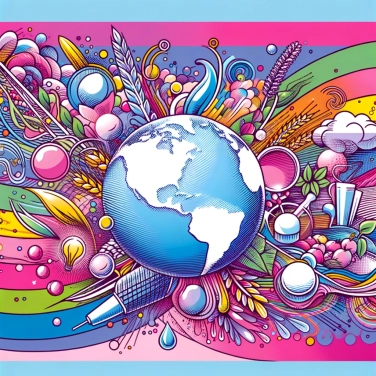The Codex Alimentarius establishes international standards aimed at ensuring the quality and safety of food to protect the health of consumers worldwide.

The Codex Alimentarius brings together concrete and common international standards on food safety. The idea behind all this is that no matter where you live on the planet, the steak or yogurt you consume adheres to roughly the same standards of hygiene, quality, and composition. This helps prevent abuses or mistakes by producers and manufacturers by precisely defining what they must comply with to avoid putting anyone in danger. These are very specific rules regarding permitted contaminants, pesticides, food additives, and product labeling. The goal is really to have the same benchmarks everywhere to ensure reliable food safety, regardless of the origin of your plate.
The Codex Alimentarius clearly helps to limit foodborne illnesses and other diseases related to what we eat. How? By setting clear standards, for example on acceptable limits of pesticides or chemical additives in food. It also defines precise rules for good hygiene practices throughout the food production chain. All of this helps to reduce the risks of contamination by bacteria or harmful substances and prevents consumers from getting sick. In short, less worry on the plate and more peace of mind for public health.
The Codex Alimentarius creates a common foundation that allows all countries to lay their cards on the table during food exchanges. Thanks to clear standards recognized by everyone, there are no more unnecessary suspicions: everyone knows exactly what they are buying or selling. This transparency also helps to establish sustainable trust between trading partners, even if they are on the other side of the globe. Consumers, in turn, better understand what they put on their plates, without any unpleasant surprises. This reduces misunderstandings and greatly facilitates international trade. No need to decipher a mystery label!
The Codex Alimentarius helps developing countries stay updated on food safety practices. It offers technical training, knowledge sharing, and easier access to clear international standards. This enables these countries to better control the quality of their food, establish effective inspection systems, and train their teams. As a result, there are fewer foodborne illnesses, a better reputation in the international market, and above all, a population that eats with confidence.
When a food crisis breaks out somewhere (mass contamination, emerging disease, or severe food shortage), the Codex Alimentarius allows countries to coordinate effectively. It prevents everyone from going in their own direction or improvising their own rules. By following clear protocols, all countries immediately know what to check, how to respond, and what to communicate. As a result, the response is faster, better organized, and the problem can be resolved before it worsens or spreads. This international coordination also limits the movement of dangerous foods from one country to another. Less risk, less stress, and more efficiency in protecting consumers worldwide.
The Codex Alimentarius was jointly created by the FAO (Food and Agriculture Organization of the United Nations) and the WHO (World Health Organization) in 1963, to ensure consumer protection and facilitate international food trade.
The Codex Alimentarius currently includes over 200 food standards and more than 100 guidelines that cover various aspects, ranging from nutritional labeling to the maximum allowable levels of food additives.
Although the Codex Alimentarius standards are not directly legally binding, they often serve as a reference in trade disputes between member countries of the World Trade Organization (WTO).
Every year, around 600 million people worldwide fall ill after consuming contaminated food, according to the WHO. The Codex Alimentarius actively contributes to reducing this number by harmonizing international health standards.
The Codex Alimentarius is a set of international standards created by the FAO and WHO to ensure the safety, quality, and fairness of global food trade. These standards cover all aspects of the food chain, from production to consumption.
The Codex Alimentarius helps ensure that food sold globally is safe, of appropriate quality, and clearly labeled. Thus, consumers benefit from protection against health risks and better information about the origin and composition of food.
The Codex Alimentarius standards are not binding laws, but they serve as recognized and harmonized international references that countries generally refer to when establishing their own food regulations.
The Codex standards are the result of a thorough and transparent scientific process involving international consultations with experts, risk analyses, and consensus among the various member countries gathered within the Codex Alimentarius Committee.
Yes, the Codex standards include guidelines on the labeling of foods derived from genetically modified organisms (GMOs) as well as on the prevention, management, and labeling of food allergens, with the aim of protecting consumer health globally.

No one has answered this quiz yet, be the first!' :-)
Question 1/5